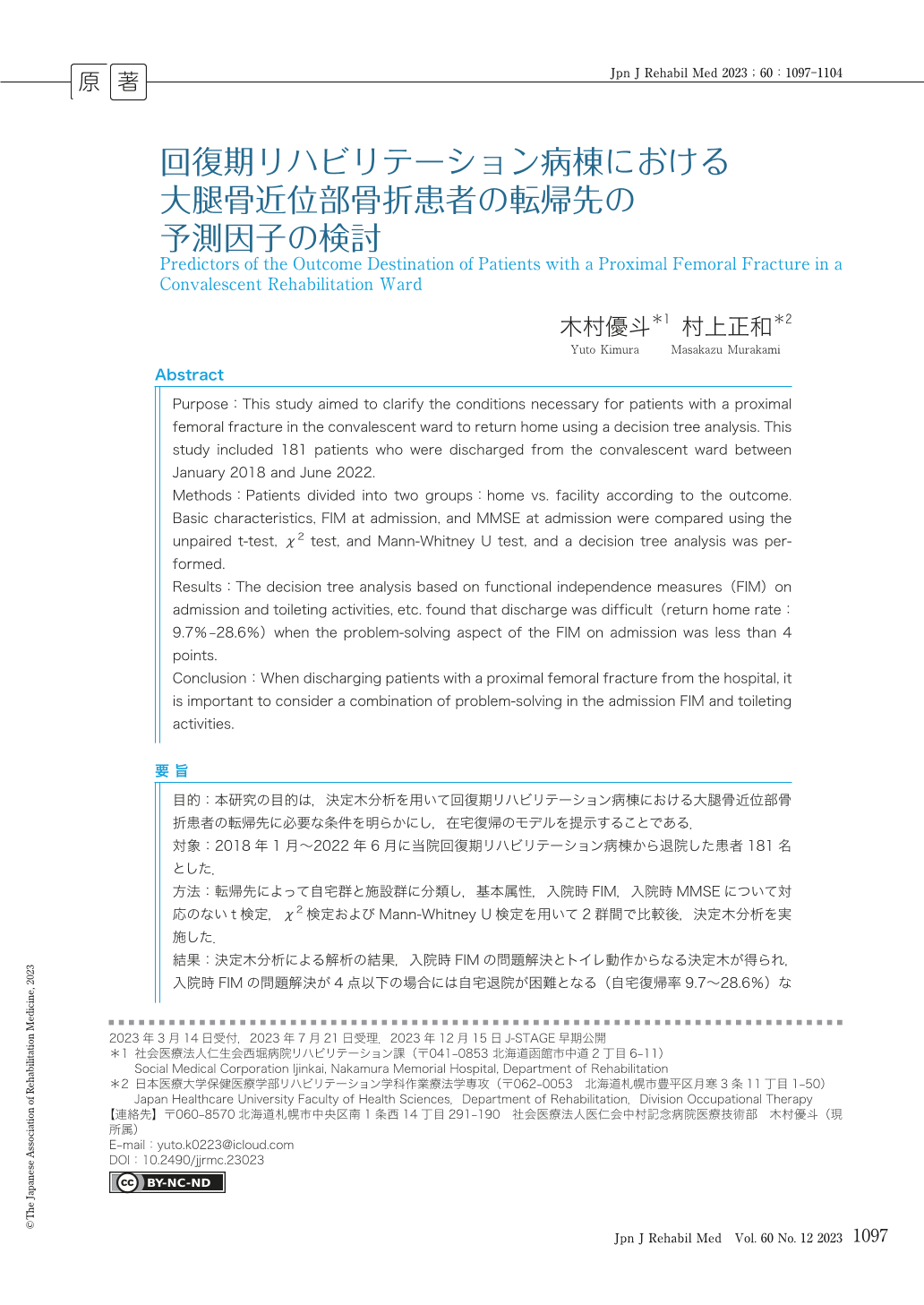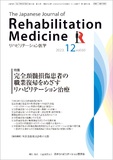Japanese
English
- 販売していません
- Abstract 文献概要
- 1ページ目 Look Inside
- 参考文献 Reference
要旨 目的:本研究の目的は,決定木分析を用いて回復期リハビリテーション病棟における大腿骨近位部骨折患者の転帰先に必要な条件を明らかにし,在宅復帰のモデルを提示することである.
対象:2018年1月〜2022年6月に当院回復期リハビリテーション病棟から退院した患者181名とした.
方法:転帰先によって自宅群と施設群に分類し,基本属性,入院時FIM,入院時MMSEについて対応のないt検定,χ2検定およびMann-Whitney U検定を用いて2群間で比較後,決定木分析を実施した.
結果:決定木分析による解析の結果,入院時FIMの問題解決とトイレ動作からなる決定木が得られ,入院時FIMの問題解決が4点以下の場合には自宅退院が困難となる(自宅復帰率9.7〜28.6%)などのルールが得られた.
結語:大腿腿骨近位部骨折患者の在宅復帰を検討する場合は,入院時FIMの問題解決とトイレ動作を組み合わせて判断することが重要であることが示された.
Abstract Purpose:This study aimed to clarify the conditions necessary for patients with a proximal femoral fracture in the convalescent ward to return home using a decision tree analysis. This study included 181 patients who were discharged from the convalescent ward between January 2018 and June 2022.
Methods:Patients divided into two groups:home vs. facility according to the outcome. Basic characteristics, FIM at admission, and MMSE at admission were compared using the unpaired t-test, χ2 test, and Mann-Whitney U test, and a decision tree analysis was performed.
Results:The decision tree analysis based on functional independence measures (FIM) on admission and toileting activities, etc. found that discharge was difficult (return home rate:9.7%-28.6%) when the problem-solving aspect of the FIM on admission was less than 4 points.
Conclusion:When discharging patients with a proximal femoral fracture from the hospital, it is important to consider a combination of problem-solving in the admission FIM and toileting activities.

Copyright © 2023, The Japanese Association of Rehabilitation Medicine. All rights reserved.


